 People are always asking us what makes a good website? But what they should be asking is what are the recent changes made by Google and how will they affect us in 2014?
People are always asking us what makes a good website? But what they should be asking is what are the recent changes made by Google and how will they affect us in 2014?
You see, a good website is based on opinion, and it’s a very vague question. For example: your site might be good in the area of design, but when it comes to ranking in Google you never see the first page. This is why we practice inbound marketing.
What is Inbound Marketing?
Inbound Marketing is a holistic approach that uses multiple internet marketing elements to bring your business more website traffic, leads, and sales. Marketing elements usually include but are not limited to landing pages, blogs, email marketing, offers, calls-to-action, and more.
How Can Inbound Marketing Help Prepare Your Website for 2014?
 With the new year approaching it’s time to analyze your current marketing strategies and re-calibrate accordingly. What is bringing you new customers? Where could you improve? We know every business owner is busy and short on time, but this is important. If you aren’t adapting then it is likely your competition will pass you by.
With the new year approaching it’s time to analyze your current marketing strategies and re-calibrate accordingly. What is bringing you new customers? Where could you improve? We know every business owner is busy and short on time, but this is important. If you aren’t adapting then it is likely your competition will pass you by.
10 Common Signs Your Marketing Needs a Tune Up:
- You have a lot of visits from social media but none of the traffic is turning into leads or sales.
- Your paying AdWords for PPC (Pay-Per-Click Ads) but you have no idea if it’s bringing you any business or even working.
- Your last blog was a month ago.
- Your last blog was a week ago.
- You don’t have any offers or documents for download on your site.
- All your marketing is in the newspaper and phonebook.
- No one visits your website.
- You don’t do any email marketing.
- Your business Facebook page is boring.
- You don’t have a form on your website.
This list could go on and on, but the point is, there is always work to be done on your website. What makes a good website is when it grows and evolves with your customers, and provides a hub for relevant and useful information.
What Information Do You Need to Evaluate Your Internet Marketing Strategy?
It’s important to look at any available data that may show you what your strategy is missing, or where it could improve. However, if you are short on time and want to narrow your focus we suggest you review these 5 documents before making changes:
1. Traffic Reports
Traffic reports tell you how many people are visiting your website. Make sure you don’t confuse visits with page views. Visits are the number of visits to your site. Views are the number of pages viewed in total by every visitor. Another metric you will see is unique visitors if you're using Google Analytics. Unique visits count each individual person as 1 visit, and does not count a repeat visit.
2. Sources Reports
Sources refer to where your website traffic is coming from. Some mediums you may see in this report may include: Paid Search, Organic Search, Referral Traffic, and Direct Traffic. Some more specific sources could be Facebook, Instagram, Twitter, etc. and these can be found in referral traffic.
3. Paid Search Reports
Paid search reports specifically on your PPC and online ad campaigns. If you pay for PPC AdWords, your traffic from these sources will show up in paid search. Make sure you evaluate how many visits are really coming from your ads, and if any of these visits have converted into leads, and how many have lead to customers.
4. Leads from Sources
Yes we already listed sources reports, but this is different. Instead of just looking at your sources you will need to answer 2 very specific questions:
- What sources are bringing you the most leads?
- What sources have a lot of traffic but are not turning into leads?
5. Customers from Leads
Getting leads is great, but that alone is not what makes a good website. What if you have a lot of leads but none of the leads are turning into customers? What a waste. To capitalize on these leads it’s important to check your lead nurturing campaigns (emails, offers, blogs…etc.).
All of these reports can be found in Google Analytics, however at Half a Bubble Out we use HubSpot for our reporting and tracking. With HubSpot’s software we can track all of your marketing and bring the data into one hub for review. This cuts down on reporting time, evaluation time, and helps us adapt our strategies quickly for our customers.
These are just some of the questions HubSpot has helped us answer for our customers:
- How many people are visiting my site?
- Is my website getting me business?
- Who is visiting my site?
- What keywords am I ranking for?
- What keywords have brought me new leads?
- What keywords have resulted in sales?
- How many people read my last blog?
- What blogs brought in the most visits?
- What blogs have resulted in customers?
- Who downloaded my offer?
Behind the Scenes of Our Reporting Software:
Marketing Performance Main Dashboard:
Our marketing performance dashboard keeps traffic and leads top of mind. After all how can you get any new business without traffic and leads? We like to compare traffic from previous months and set targets for next month's traffic. This view is also a great monitoring tool. We can keep an eye out for drastic dips in website traffic for our clients and respond quickly to improve their traffic before it takes a dive.
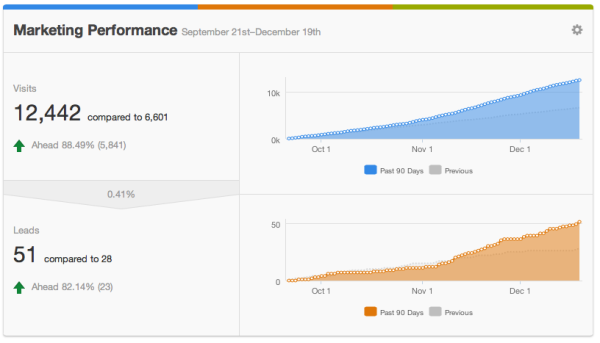
Blogging Dashboard:
Are you blogging, but feel like your not getting anywhere? Blogging is the backbone of what makes a good website easier to find. Our software tells us exactly what blogs are performing and what blogs need to be tweaked to increase traffic. This report helps us strategize blogging calendars and keyword targets for our customers. It also assists us in managing our link building efforts for search engine optimization.
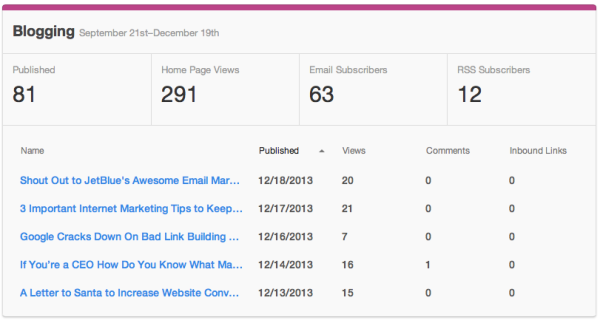
Emails Dashboard:
If your business uses email marketing to communicate with leads then it is important to track the performance. This reporting view shows us exactly how many of our client's emails were sent, opened, and clicked. This is very valuable because we can adjust email subject lines, content, images and more to increase the click rate, and get even more business for our customers.
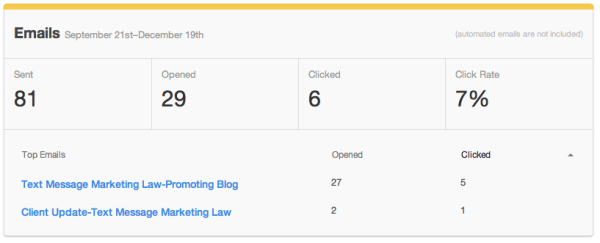
Landing Pages Dashboard:
Landing pages are pages other than the pages found directly in navigation, and often are the landing place for your offers, paid search, and products. This view shows exactly how many views your landing pages have received, the amount of people who filled out a form, and even how many of those visitors have turned into contacts. This view can often reveal what landing pages are performing best, and what landing pages may need to be tweaked for better performance.
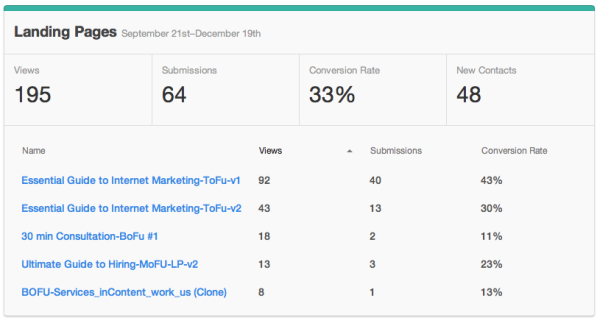
Sources Dashboard:
This shows where your traffic is coming from. Organic traffic comes from non-paid, non-direct, non-referral traffic. Generally a visitor has to search for a term or phrase and discover your site. Some of the best ways to improve your organic search traffic is by blogging.
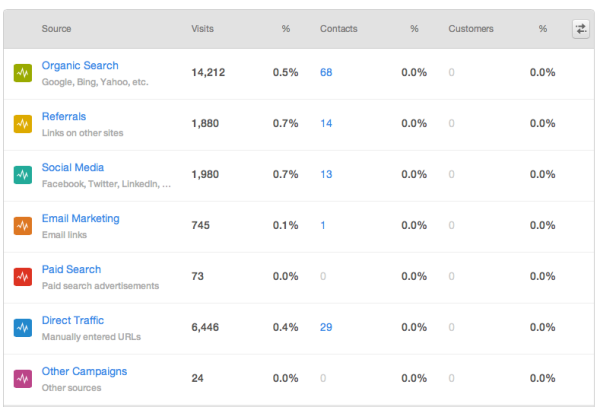
For some of you, you may not think reporting is what makes a good website and it may sound overwhelming. You think getting answers like these has to be overly complicated and time consuming. You're right! If you don’t have someone like us, or HubSpot software then it is. Trust us, we have spent the time manually compiling all of these answers, but the truth is our time and your time is better used doing the things you love to do. For us it’s creating marketing that people love.


